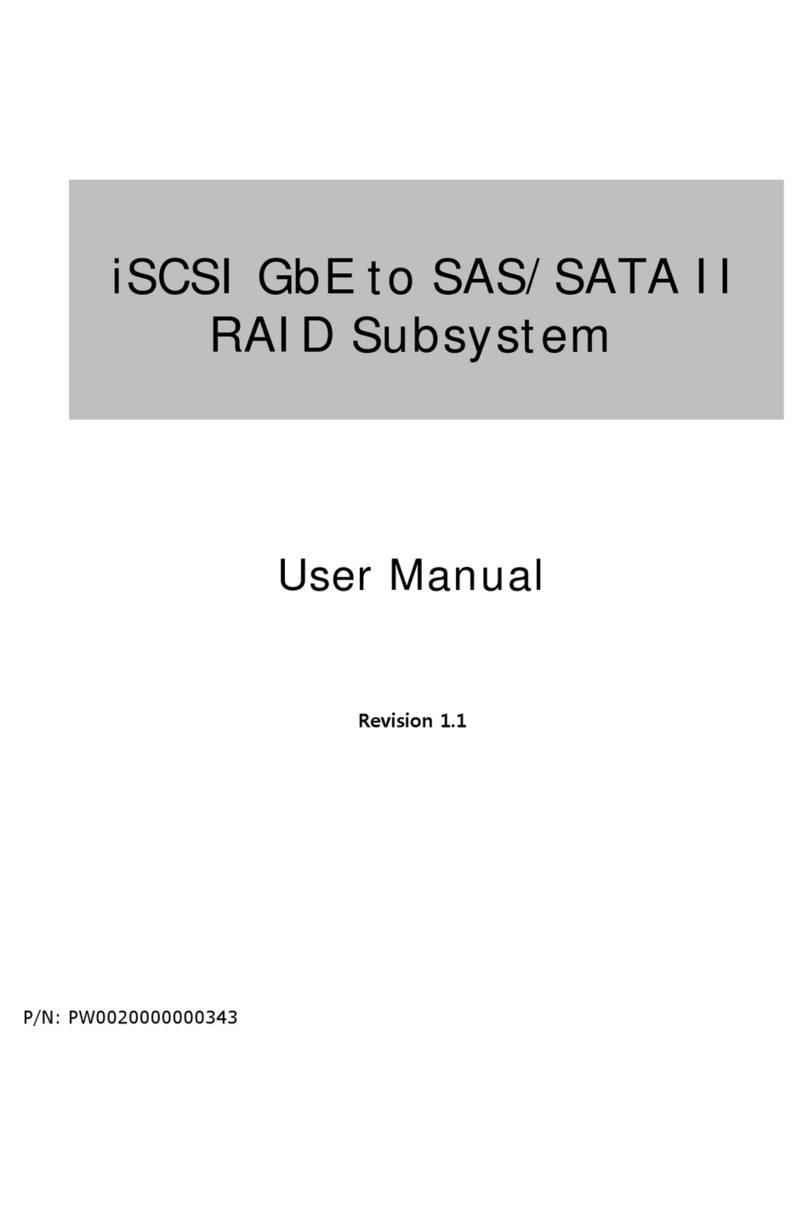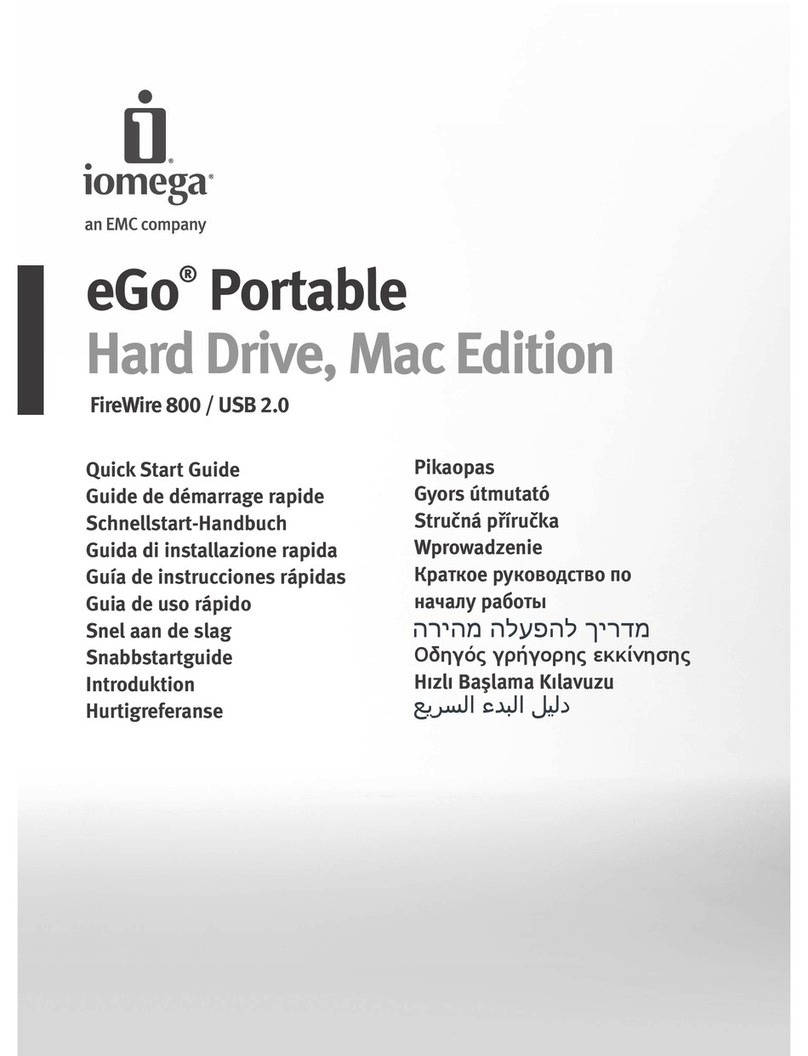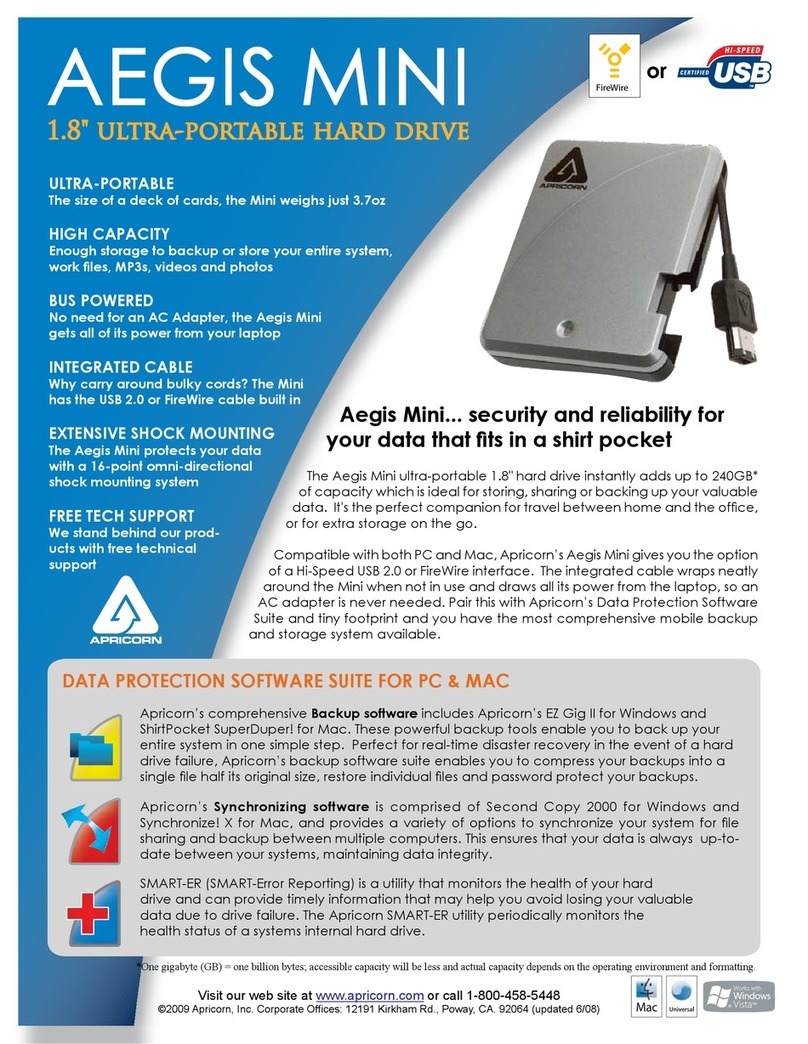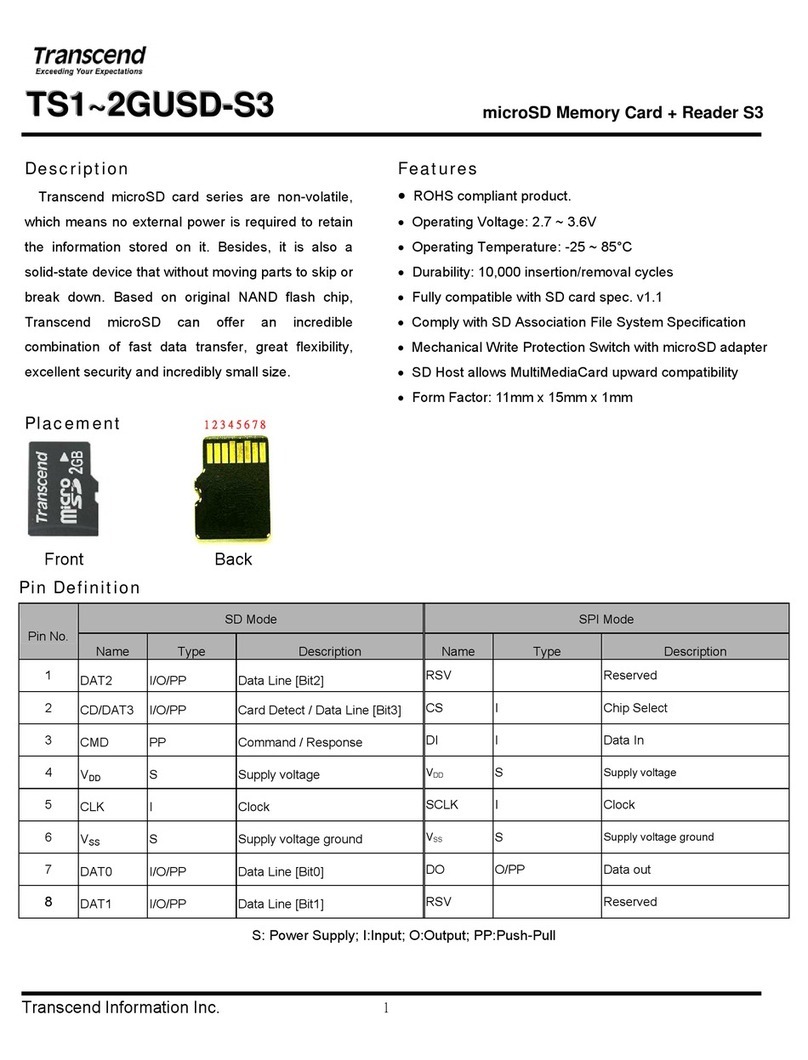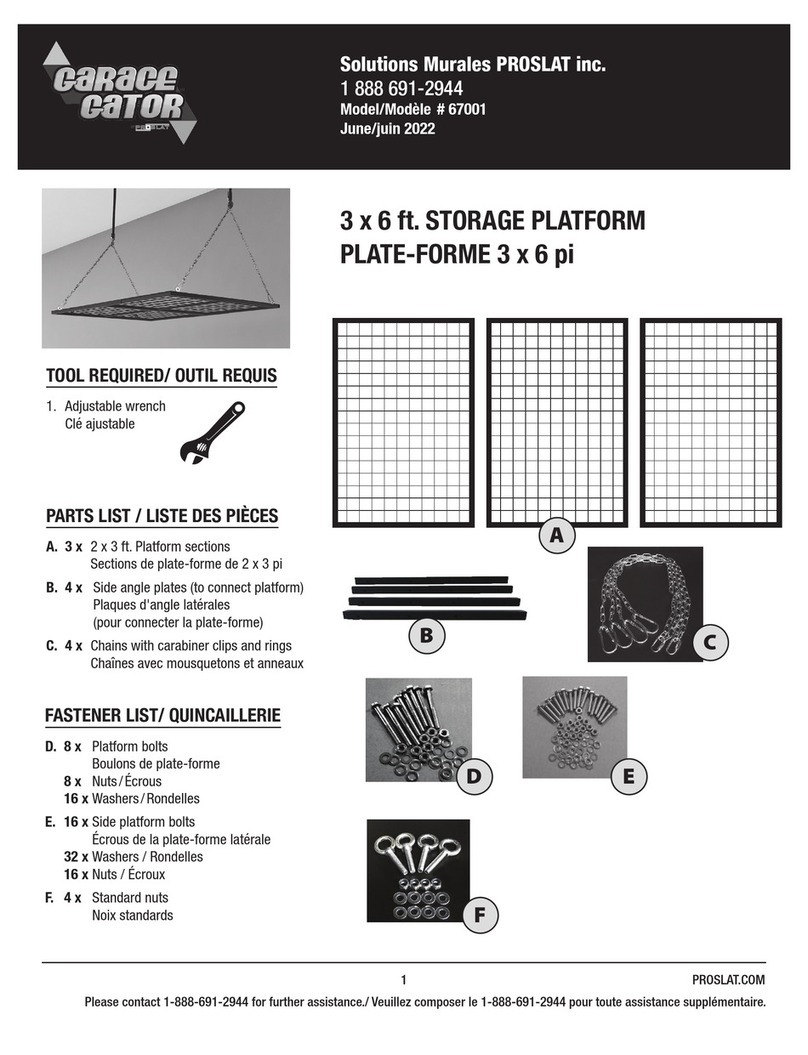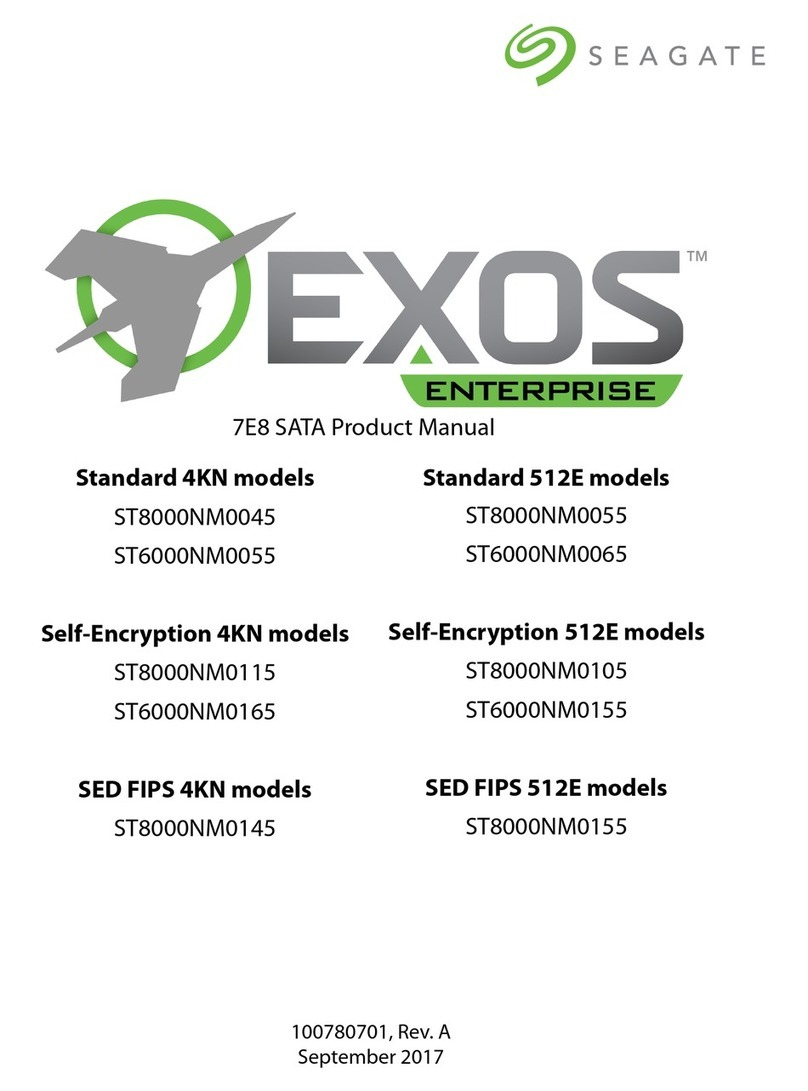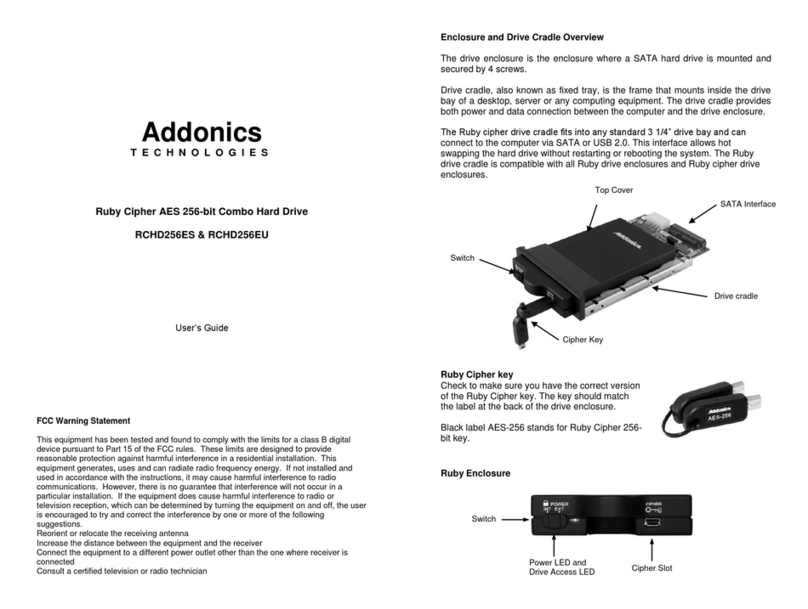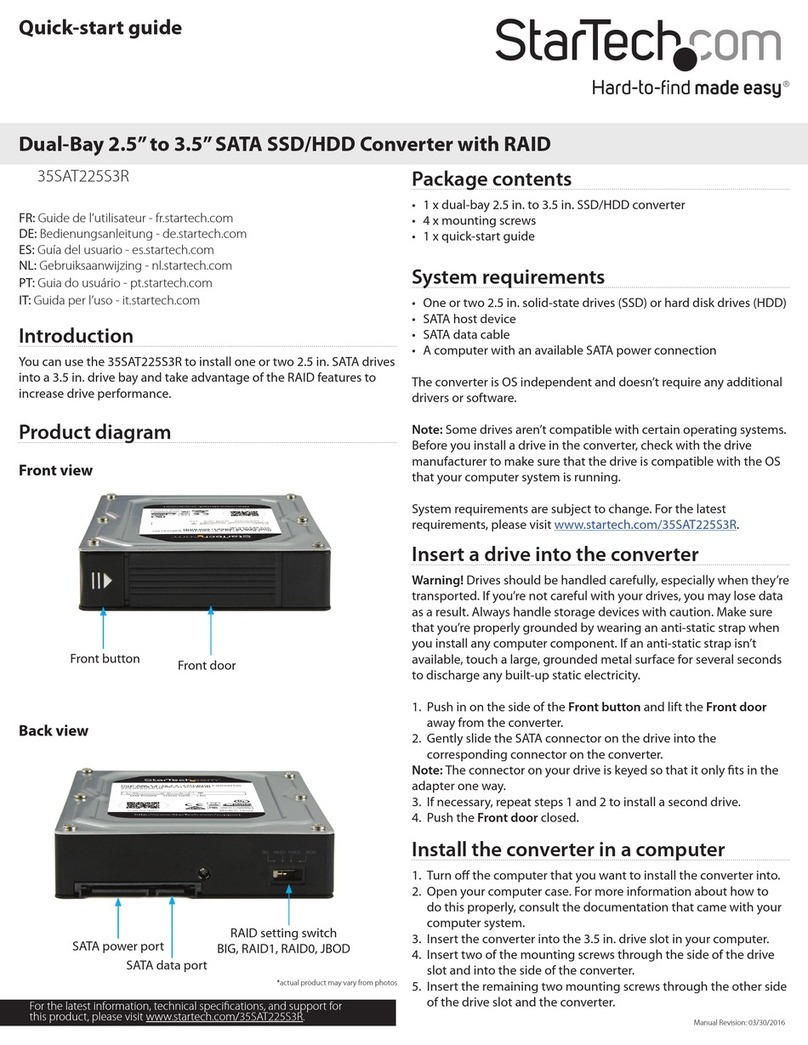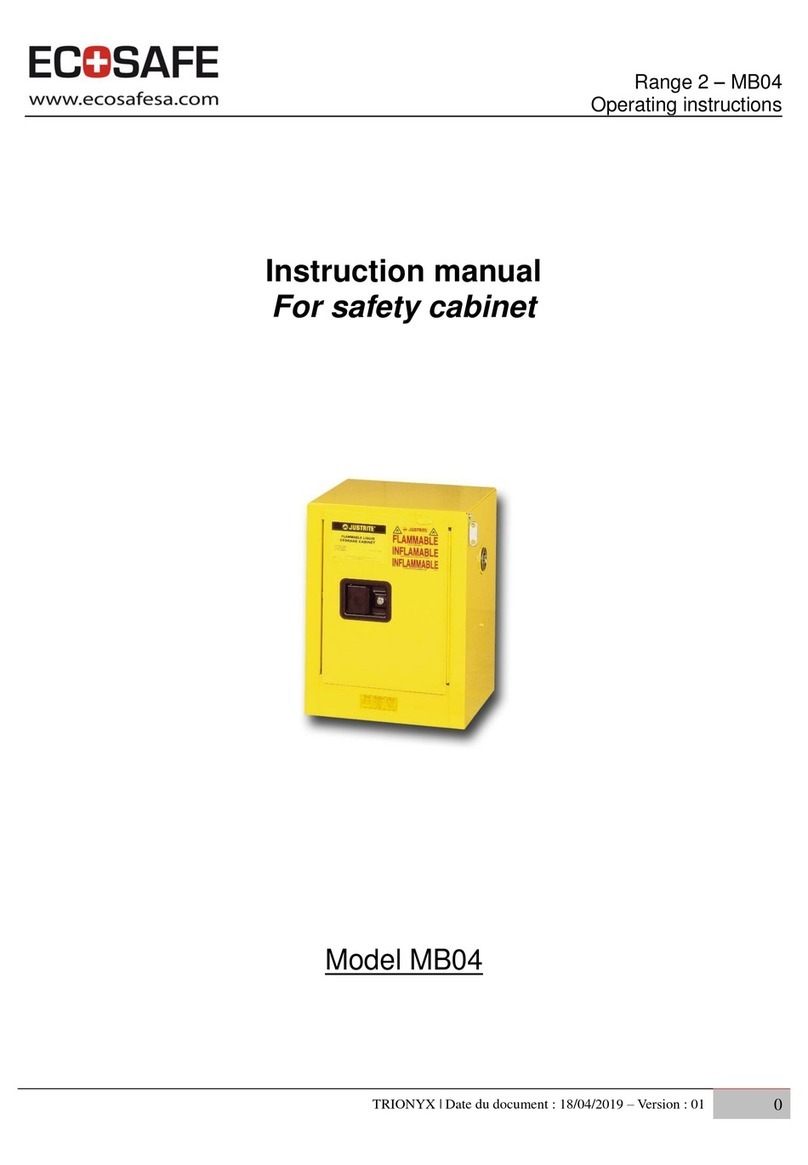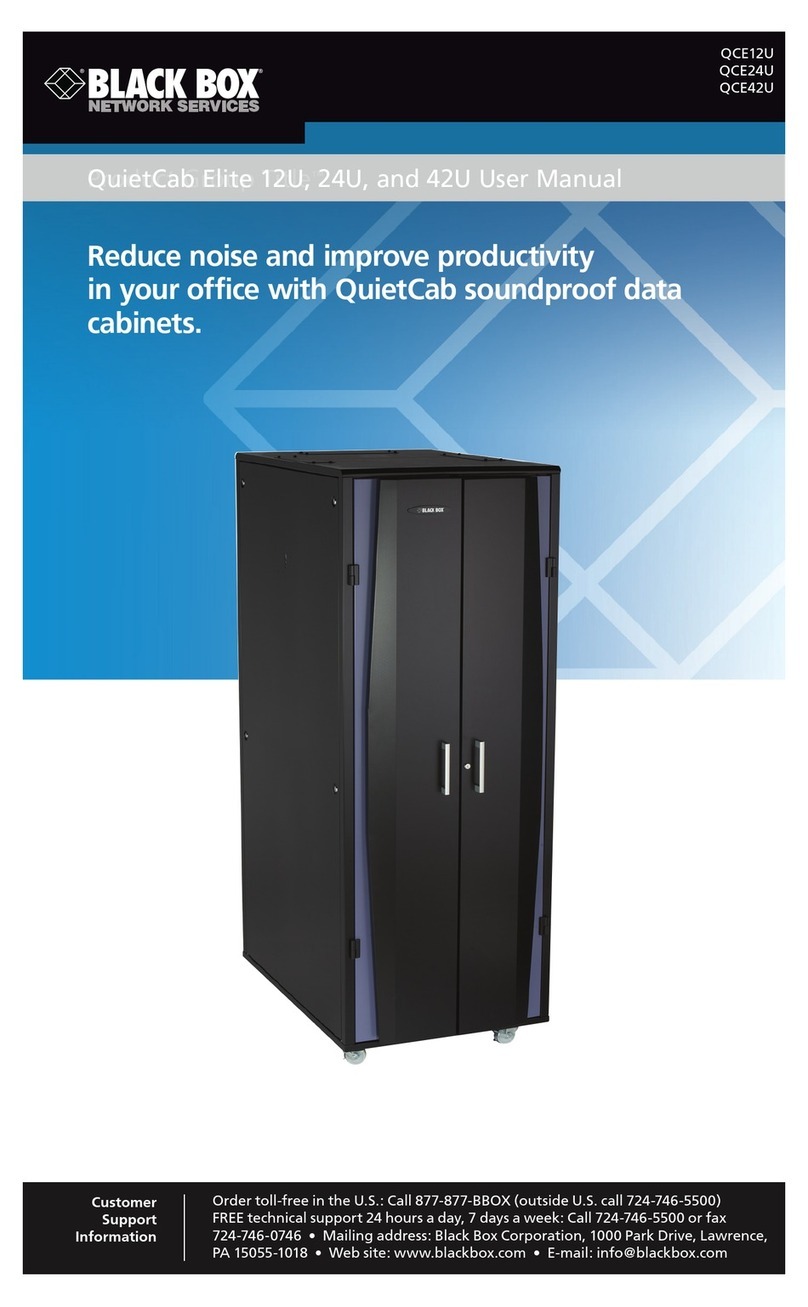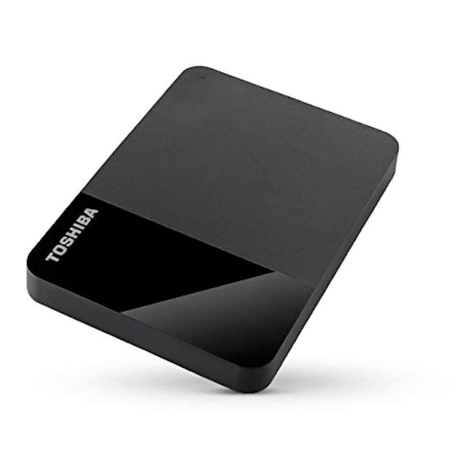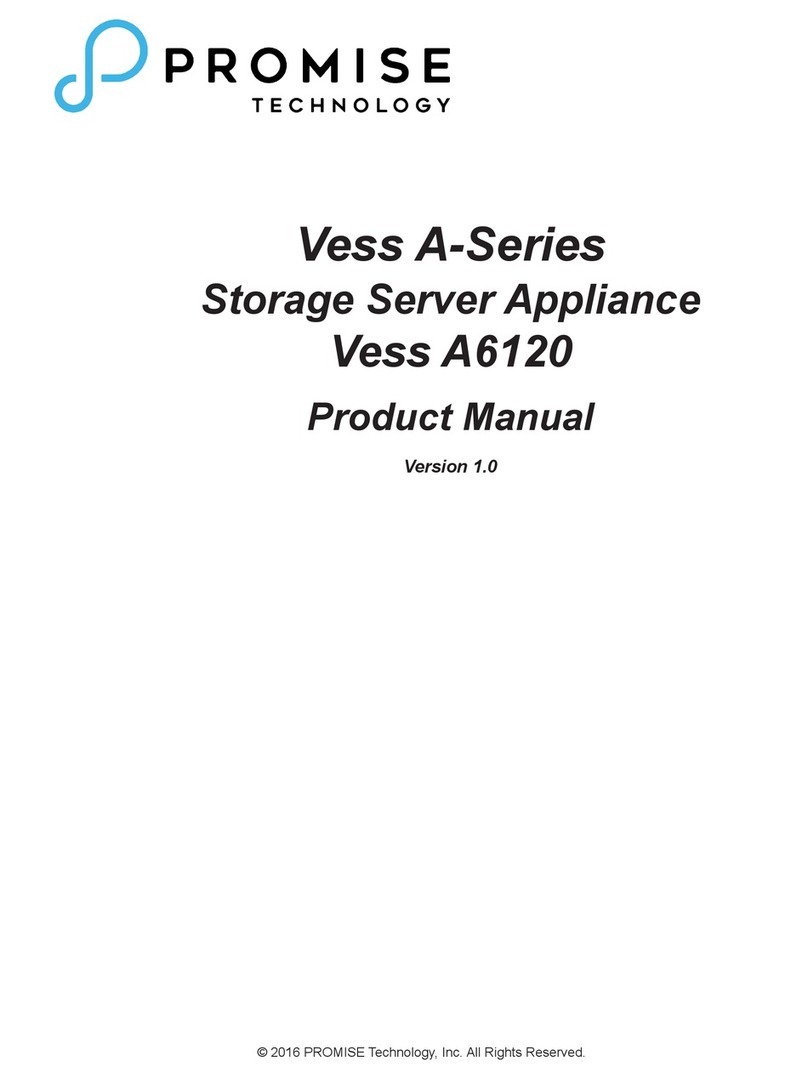Proware DP-503-F4A3 User manual

DP-503-F4A3
RAID Subsystem
Installation and User Manual
Revision 1.1
P/N: PW0020000000322

DP-503-F4A3 RAID SUBSYSTEM
2 Installation and User Manual
Preface
About this manual
This manual provides information regarding the quick installation and hardware features of the
DP-503-F4A3 RAID subsystem. This document also describes how to use the storage
management software. Information contained in the manual has been reviewed for accuracy, but
not for product warranty because of the various environment/OS/settings. Information and
specifications will be changed without further notice.
This manual uses section numbering for every topics being discussed for easy and convenient
way of finding information in accordance with the user’s needs. The following icons are being
used for some details and information to be considered in going through with this manual:
Copyright
No part of this publication may be reproduced, stored in a retrieval system, or transmitted in any
form or by any means, electronic, mechanical, photocopying, recording or otherwise, without the
prior written consent.
Trademarks
All products and trade names used in this document are trademarks or registered trademarks of
their respective holders.
Changes
The material in this document is for information only and is subject to change without notice.
IMPORTANT!
These are the important information that the user must remember.
WARNING!
These are the warnings that the user must follow to avoid
unnecessary errors and bodily injury during hardware and software
operation of the subsystem.
CAUTION:
These are the cautions that user must be aware to prevent damage
to the equipment and its components.
NOTES:
These are notes that contain useful information and tips that the
user must give attention to in going through with the subsystem
operation.

DP-503-F4A3 RAID SUBSYSTEM
Installation and User Manual 3
Table of Contents
Before You Begin ................................................................................................6
Safety Guidelines................................................................................................................................................................6
Controller Configuration.................................................................................................................................................6
Packaging, Shipment and Delivery.............................................................................................................................6
Unpacking the Subsystem..............................................................................................................................................7
Chapter 1 Introduction.................................................................................................8
1.1 Key Features..............................................................................................................................................................8
1.2 Identifying Parts of the RAID Subsystem......................................................................................................9
1.2.1 Front View .........................................................................................................................................................9
1.2.2 Rear View........................................................................................................................................................ 12
1.3 RAID Concepts ...................................................................................................................................................... 13
1.4 Fibre Functions...................................................................................................................................................... 17
1.4.1 Overview ......................................................................................................................................................... 17
1.4.2 Three ways to connect (FC Topologies)............................................................................................... 17
1.4.3 Basic Elements.............................................................................................................................................. 18
1.4.4 LUN Masking .................................................................................................................................................. 19
1.5 Array Definition..................................................................................................................................................... 19
1.5.1 Raid Set ........................................................................................................................................................... 19
1.5.2 Volume Set .................................................................................................................................................... 20
1.5.3 Easy to Use Features................................................................................................................................. 20
1.5.3.1 Instant Availability/Background Initialization .......................................................................... 20
1.5.3.2 Array Roaming..................................................................................................................................... 21
1.5.3.3 Online Capacity Expansion ............................................................................................................. 21
1.5.3.4 Online RAID Level and Stripe Size Migration ......................................................................... 22
1.5.4 High Availability............................................................................................................................................ 22
1.5.4.1 Creating Hot Spares ............................................................................................................................. 22
1.5.4.2 Hot-Swap Disk Drive Support........................................................................................................... 23
1.5.4.3 Hot-Swap Disk Rebuild ....................................................................................................................... 23
Chapter 2 Getting Started .........................................................................................23
2.1 Preparing the Subsystem and Powering On ............................................................................................ 23
2.2 Installing Hard Drives ......................................................................................................................................... 24
Chapter 3 RAID Configuration .................................................................................27
3.1 Configuring Through a Terminal.................................................................................................................... 27

DP-503-F4A3 RAID SUBSYSTEM
4 Installation and User Manual
3.2 Configuring Using the LCD Panel .................................................................................................................. 32
3.3 Menu Diagram ...................................................................................................................................................... 34
3.4 Web Browser-Based Remote RAID Management via R-Link Port................................................... 39
3.5 Quick Create........................................................................................................................................................... 41
3.6 Raid Set Functions ............................................................................................................................................... 42
3.6.1 Create Raid Set.............................................................................................................................................42
3.6.2 Delete Raid Set............................................................................................................................................. 43
3.6.3 Expand Raid Set ........................................................................................................................................... 43
3.6.4 Offline Raid Set ............................................................................................................................................ 45
3.6.5 Activate Incomplete Raid Set ................................................................................................................. 46
3.6.6 Create Hot Spare......................................................................................................................................... 47
3.6.7 Delete Hot Spare ......................................................................................................................................... 47
3.6.8 Rescue Raid Set ............................................................................................................................................48
3.7 Volume Set Function ......................................................................................................................................... 49
3.7.1 Create Volume Set ...................................................................................................................................... 49
3.7.2 Delete Volume Set ...................................................................................................................................... 51
3.7.3 Modify Volume Set..................................................................................................................................... 52
3.7.3.1 Volume Expansion .............................................................................................................................. 52
3.7.4 Volume Set Migration............................................................................................................................... 52
3.7.5 Check Volume Set........................................................................................................................................54
3.7.6 Stop Check Volume Set ............................................................................................................................. 55
3.7.7 Volume Set Host Filters ............................................................................................................................ 56
3.8 Physical Drive .......................................................................................................................................................57
3.8.1 Create Pass-Through Disk ........................................................................................................................ 57
3.8.2 Modify Pass-Through Disk....................................................................................................................... 58
3.8.3 Delete Pass-Through Disk ........................................................................................................................ 59
3.8.4 Identify Selected Drive.............................................................................................................................. 59
3.9 System Controls ..................................................................................................................................................60
3.9.1 System Configuration................................................................................................................................. 60
3.9.2 Fibre Channel Configuration................................................................................................................... 62
3.9.2.1 View/Edit Host Name List............................................................................................................... 63
3.9.2.2 Volume Set Host Filters................................................................................................................... 64
3.9.3 EtherNet Config............................................................................................................................................ 67
3.9.4 Alert By Mail Config................................................................................................................................... 67
3.9.5 SNMP Configuration .................................................................................................................................. 68
3.9.6 NTP Configuration....................................................................................................................................... 69
3.9.7 View Events .................................................................................................................................................... 70
3.9.8 Generate Test Events .................................................................................................................................. 71
3.9.9 Clear Events Buffer .................................................................................................................................... 71
3.9.10 Modify Password....................................................................................................................................... 72

DP-503-F4A3 RAID SUBSYSTEM
Installation and User Manual 5
3.9.11 Upgrade Firmware................................................................................................................................... 72
3.10 Information Menu................................................................................................................................................. 73
3.10.1 RaidSet Hierarchy......................................................................................................................................... 73
3.10.2 System Information..................................................................................................................................... 75
3.10.3 Hardware Monitor ....................................................................................................................................... 75
3.11 Creating New Raid Set or Reconfiguring an Existing Raid Set ...................................................... 77
3.12 Upgrading the Firmware.................................................................................................................................. 78

DP-503-F4A3 RAID SUBSYSTEM
6 Installation and User Manual
Before You Begin
Before going through with this manual, you should read and focus to the following safety
guidelines. Notes about the subsystem’s controller configuration and the product packaging and
delivery are also included.
Safety Guidelines
To provide reasonable protection against any harm on the part of the user and to obtain
maximum performance, user is advised to be aware of the following safety guidelines particularly
in handling hardware components:
Upon receiving of the product:
Place the product in its proper location.
To avoid unnecessary dropping out, make sure that somebody is around for immediate
assistance.
It should be handled with care to avoid dropping that may cause damage to the product.
Always use the correct lifting procedures.
Upon installing of the product:
Ambient temperature is very important for the installation site. It must not exceed 30◦C. Due
to seasonal climate changes; regulate the installation site temperature making it not to
exceed the allowed ambient temperature.
Before plugging-in any power cords, cables and connectors, make sure that the power
switches are turned off. Disconnect first any power connection if the power supply module is
being removed from the enclosure.
Outlets must be accessible to the equipment.
All external connections should be made using shielded cables and as much as possible
should not be performed by bare hand. Using anti-static hand gloves is recommended.
In installing each component, secure all the mounting screws and locks. Make sure that all
screws are fully tightened. Follow correctly all the listed procedures in this manual for reliable
performance.
Controller Configuration
This RAID subsystem supports single controller configuration.
Packaging, Shipment and Delivery
Before removing the subsystem from the shipping carton, you should visually inspect the
physical condition of the shipping carton.
Unpack the subsystem and verify that the contents of the shipping carton are all there and in
good condition.
Exterior damage to the shipping carton may indicate that the contents of the carton are
damaged.
If any damage is found, do not remove the components; contact the dealer where you purchased the
subsystem for further instructions.

DP-503-F4A3 RAID SUBSYSTEM
Installation and User Manual 7
Unpacking the Subsystem
The package contains the following items:
• RAID subsystem unit
• One power cord
• One RJ-45 Ethernet cable
• One external serial cable
• Two external Fibre optic cables
• Installation Reference Guide
• Spare screws, etc.

DP-503-F4A3 RAID SUBSYSTEM
8 Installation and User Manual
Chapter 1 Introduction
1.1 Key Features
Subsystem Features:
Features an Intel 80321 64-bit RISC I/O processor
Built-in 128MB cache memory
Two 4Gbps FC host ports
Supports up to Five (5) 1" hot-swappable SATA II hard drives
Excellent user friendly operation
High quality cooling fan
Local audible event notification alarm
Supports password protection
Real time drive activity and status indicators
RAID Function Features:
Supports RAID levels 0, 1, 0+1, 3, 5, 6 and JBOD
Supports hot spare and automatic hot rebuild
Allows online capacity expansion within the enclosure
Transparent data protection for all popular operating systems
Tagged command queuing for 256 commands, allows for overlapping data streams
Supports multiple array enclosures per host connection
Bad block auto-remapping
Multiple RAID selection
Array roaming
Online RAID level migration

DP-503-F4A3 RAID SUBSYSTEM
Installation and User Manual 9
1.2 Identifying Parts of the RAID Subsystem
The illustrations below identify the various parts of the subsystem.
1.2.1 Front View

DP-503-F4A3 RAID SUBSYSTEM
10 Installation and User Manual
1. HDD Status Indicator
Every Drive Tray contains two LEDs for displaying the HDD status.
Parts Function
HDD Power LED
No LED light indicates power is on and hard drive status is
g
ood
for this slot. Red means no disk drive inserted or disk drive is
Faulty.
HDD Access LED LED will blink blue when the hard drive is being accessed.
2. Lock Indicator
Every Drive Tray is lockable and is fitted with a lock indicator to indicate whether or not
the tray is locked into the chassis or not. Each tray is also fitted with an ergonomic handle for
easy tray removal.

DP-503-F4A3 RAID SUBSYSTEM
Installation and User Manual 11
3. Front Panel
Part Function
Power LED Green LED indicates power is on.
Busy LED Orange blinking LED indicates data is being accessed.
Up and
Down Arrow
buttons
Use the Up or Down arrow keys to go through the
information on the LCD screen. This is also used to move
between each menu when you configure the subsystem.
Select button This is used to enter the option you have selected.
Exit button Press this button to return to the previous menu.

DP-503-F4A3 RAID SUBSYSTEM
12 Installation and User Manual
1.2.2 Rear View
1. Monitor Port
The subsystem is equipped with a serial monitor port allowing you to connect a PC or terminal.
2. R-Link Port: Remote Link through RJ-45 Ethernet for remote management
The subsystem is equipped with one 10/100 Ethernet RJ45 LAN port. You use a web browser to manage the
RAID subsystem through Ethernet for remote configuration and monitoring.
Link LED: Green LED indicates Ethernet is linking.
Access LED: The LED will blink orange when the 100Mbps Ethernet is being accessed.
3. Host Channel A
4. Host Channel B
The subsystem has 2 Fibre Host Channels (Host Channel A and Host Channel B). Each H ost
Channel has one optical LC Fibre connector for connecting to the Fibre Switch or to the host
system’s Fibre interface.

DP-503-F4A3 RAID SUBSYSTEM
Installation and User Manual 13
1.3 RAID Concepts
RAID Fundamentals
The basic idea of RAID (Redundant Array of Independent Disks) is to combine multiple inexpensive
disk drives into an array of disk drives to obtain performance, capacity and reliability that exceeds
that of a single large drive. The array of drives appears to the host computer as a single logical drive.
Five types of array architectures, RAID 1 through RAID 5, were originally defined; each provides disk
fault-tolerance with different compromises in features and performance. In addition to these five
redundant array architectures, it has become popular to refer to a non-redundant array of disk drives
as a RAID 0 arrays.
Disk Striping
Fundamental to RAID technology is striping. This is a method of combining multiple drives into one
logical storage unit. Striping partitions the storage space of each drive into stripes, which can be as
small as one sector (512 bytes) or as large as several megabytes. These stripes are then interleaved
in a rotating sequence, so that the combined space is composed alternately of stripes from each drive.
The specific type of operating environment determines whether large or small stripes should be used.
Most operating systems today support concurrent disk I/O operations across multiple drives. However,
in order to maximize throughput for the disk subsystem, the I/O load must be balanced across all the
drives so that each drive can be kept busy as much as possible. In a multiple drive system without
striping, the disk I/O load is never perfectly balanced. Some drives will contain data files that are
frequently accessed and some drives will rarely be accessed.
By striping the drives in the array with stripes large enough so that each record falls entirely within
one stripe, most records can be evenly distributed across all drives. This keeps all drives in the array
busy during heavy load situations. This situation allows all drives to work concurrently on different I/O
operations, and thus maximize the number of simultaneous I/O operations that can be performed by
the array.
Definition of RAID Levels

DP-503-F4A3 RAID SUBSYSTEM
14 Installation and User Manual
RAID 0 is typically defined as a group of striped disk drives without parity or data redundancy. RAID
0 arrays can be configured with large stripes for multi-user environments or small stripes for single-
user systems that access long sequential records. RAID 0 arrays deliver the best data storage
efficiency and performance of any array type. The disadvantage is that if one drive in a RAID 0 array
fails, the entire array fails.
RAID 1, also known as disk mirroring, is simply a pair of disk drives that store duplicate data but
appear to the computer as a single drive. Although striping is not used within a single mirrored drive
pair, multiple RAID 1 arrays can be striped together to create a single large array consisting of pairs
of mirrored drives. All writes must go to both drives of a mirrored pair so that the information on the
drives is kept identical. However, each individual drive can perform simultaneous, independent read
operations. Mirroring thus doubles the read performance of a single non-mirrored drive and while the
write performance is unchanged. RAID 1 delivers the best performance of any redundant array type.
In addition, there is less performance degradation during drive failure than in RAID 5 arrays.
RAID 3 sector-stripes data across groups of drives, but one drive in the group is dedicated to storing
parity information. RAID 3 relies on the embedded ECC in each sector for error detection. In the case

DP-503-F4A3 RAID SUBSYSTEM
Installation and User Manual 15
of drive failure, data recovery is accomplished by calculating the exclusive OR (XOR) of the
information recorded on the remaining drives. Records typically span all drives, which optimizes the
disk transfer rate. Because each I/O request accesses every drive in the array, RAID 3 arrays can
satisfy only one I/O request at a time. RAID 3 delivers the best performance for single-user, single-
tasking environments with long records. Synchronized-spindle drives are required for RAID 3 arrays in
order to avoid performance degradation with short records. RAID 5 arrays with small stripes can yield
similar performance to RAID 3 arrays.
Under RAID 5 parity information is distributed across all the drives. Since there is no dedicated parity
drive, all drives contain data and read operations can be overlapped on every drive in the array. Write
operations will typically access one data drive and one parity drive. However, because different
records store their parity on different drives, write operations can usually be overlapped.
RAID 6 is similar to RAID 5 in that data protection is achieved by writing parity information to the
physical drives in the array. With RAID 6, however,
two
sets of parity data are used. These two sets
are different, and each set occupies a capacity equivalent to that of one of the constituent drives. The

DP-503-F4A3 RAID SUBSYSTEM
16 Installation and User Manual
main advantage of RAID 6 is High data availability – any two drives can fail without loss of critical
data.
Dual-level RAID achieves a balance between the increased data availability inherent in RAID 1 and
the increased read performance inherent in disk striping (RAID 0). These arrays are sometimes
referred to as RAID 0+1.
In summary:
RAID 0 is the fastest and most efficient array type but offers no fault-tolerance. RAID 0 requires a
minimum of one drive.
RAID 1 is the best choice for performance-critical, fault-tolerant environments. RAID 1 is the only
choice for fault-tolerance if no more than two drives are used.
RAID 3 can be used to speed up data transfer and provide fault-tolerance in single-user
environments that access long sequential records. However, RAID 3 does not allow overlapping of
multiple I/O operations and requires synchronized-spindle drives to avoid performance
degradation with short records. RAID 5 with a small stripe size offers similar performance.
RAID 5 combines efficient, fault-tolerant data storage with good performance characteristics.
However, write performance and performance during drive failure is slower than with RAID 1.
Rebuild operations also require more time than with RAID 1 because parity information is also
reconstructed. At least three drives are required for RAID 5 arrays.
RAID 6 is essentially an extension of RAID level 5 which allows for additional fault tolerance by
using a second independent distributed parity scheme (two-dimensional parity). Data is striped on
a block level across a set of drives, just like in RAID 5, and a second set of parity is calculated
and written across all the drives; RAID 6 provides for an extremely high data fault tolerance and
can sustain multiple simultaneous drive failures. It is a perfect solution for mission critical
applications.
RAID Management
The subsystem can implement several different levels of RAID technology. RAID levels supported by

DP-503-F4A3 RAID SUBSYSTEM
Installation and User Manual 17
the subsystem are shown below.
RAID
Level Description Min. Drives
0 Block striping is provide, which yields higher
performance than with individual drives. There is
no redundancy. 1
1 Drives are paired and mirrored. All data is 100%
duplicated on an equivalent drive. Fully
redundant. 2
3 Data is striped across several physical drives.
Parity protection is used for data redundancy. 3
5 Data is striped across several physical drives.
Parity protection is used for data redundancy. 3
6
Data is striped across several physical drives.
Parity protection is used for data redundancy.
Requires N+2 drives to implement because of
two-dimensional parity scheme
4
0 + 1 Combination of RAID levels 0 and 1. This level
provides striping and redundancy through
mirroring. 4
1.4 Fibre Functions
1.4.1 Overview
Fibre Channel is a set of standards under the auspices of ANSI (American National Standards
Institute). Fibre Channel combines the best features from SCSI bus and IP protocols into a
single standard interface, including high-performance data transfer (up to 400 MB per second),
low error rates, multiple connection topologies, scalability, and more. It retains the SCSI
command-set functionality, but uses a Fibre Channel controller instead of a SCSI controller to
provide the interface for data transmission. In today’s fast-moving computer environments, Fibre
Channel is the serial data transfer protocol choice for high-speed transportation of large
volume of information between workstation, server, mass storage subsystems, and peripherals.
Physically, the Fibre Channel can be an interconnection of multiple communication points, called
N_Ports. The port itself only manages the connection between itself and another such end-
port which, which could either be part of a switched network, referred to as a Fabric in FC
terminology, or a point-to- point link. The fundamental elements of a Fibre Channel Network are
Port and Node. So a Node can be a computer system, storage device, or Hub/Switch.
This chapter describes the Fibre-specific functions available in the Fibre Channel RAID controller.
Optional functions have been implemented for Fibre Channel operation wh i c h is only available
in the Web browser-based RAID manager. The LCD and VT-100 can’t be used to configure
so me o f the options available for Fibre Channel RAID controller.
1.4.2 Three ways to connect (FC Topologies)

DP-503-F4A3 RAID SUBSYSTEM
18 Installation and User Manual
A topology defines the interconnection scheme. It defines the number of devices that can be
connected. Fibre Channel supports three different logical or physical arrangements (topologies)
for connecting the devices into a network:
Point-to-Point
Arbitrated Loop(AL)
Switched (Fabric)
The physical connection between devices varies from one topology to another. In all of these
topologies, a transmitter node in one device sends information to a receiver node in another device.
Fibre Channel networks can use any combination of point-to-point, arbitrated loop (FC_AL), and
switched fabric topologies to provide a variety of device sharing options.
Point-to-point
A point-to-point topology consists of two and only two devices connected by N- ports of which are
connected directly. In this topology, the transmit Fibre of one device connects to the receiver
Fibre of the other device and vice versa. The connection is not shared with any other devices.
Simplicity and use of the full data transfer rate make this Point-to-point topology an ideal
extension to the standard SCSI bus interface. The point-to-point topology extends SCSI
connectivity from a server to a peripheral device over longer distances.
Arbitrated Loop
The arbitrated loop (FC-AL) topology provides a relatively simple method of connecting and
sharing resources. This topology allows up to 126 devices or nodes in a single, continuous loop
or ring. The loop is constructed by daisy-chaining the transmit and receive cables from one
device to the next or by using a hub or switch to create a virtual loop. The loop can be self-
contained or incorporated as an element in a larger network. Increasing the number of devices
on the loop can reduce the overall performance of the loop because the amount of time each
device can use the loop is reduced. The ports in an arbitrated loop are referred as L-Ports.
Switched Fabric
A switched fabric a term is used in a Fibre channel to describe the generic switching or routing
structure that delivers a frame to a destination based on the destination address in the frame
header. It can be used to connect up to 16 million nodes, each of which is identified by a unique,
world-wide name (WWN). In a switched fabric, each data frame is transferred over a virtual point-
to-point connection. There can be any number of full-bandwidth transfers occurring through the
switch. Devices do not have to arbitrate for control of the network; each device can use the full
available bandwidth.
A fabric topology contains one or more switches connecting the ports in the FC network. The
benefit of this topology is that many devices (approximately 2-24) can be connected. A port on a
Fabric switch is called an F-Port (Fabric Port). Fabric switches can function as an alias server,
multi-cast server, broadcast server, quality of service facilitator and directory server as well.
1.4.3 Basic Elements

DP-503-F4A3 RAID SUBSYSTEM
Installation and User Manual 19
The following elements are the connectivity of storages and Server components using the Fibre
channel technology.
Cables and connectors
There are different types of cables of varies lengths for use in a Fibre Channel configuration.
Two types of cables are supported: Copper and Optical (fiber). Copper cables are used for
short distances and transfer data up to 30 meters per link. Fiber cables come in two distinct
types: Multi-Mode fiber (MMF) for short distances (up to 2km), and Single-Mode Fiber
(SMF) for longer distances (up to 10 kilometers). By default, the RAID subsystem
supports two short-wave multi-mode fibre optic SFP connectors.
Fibre Channel Adapter
Fibre Channel Adapter is a device that is connected to a workstation, server, or host system and
control the protocol for communications.
Hubs
Fibre Channel hubs are used to connect up to 126 nodes into a logical loop. All connected nodes
share the bandwidth of this one logical loop. Each port on a hub contains a Port Bypass
Circuit(PBC) to automatically open and close the loop to support hot pluggability.
Switched Fabric
Switched fabric is the highest performing device available for interconnecting large number of
devices, increasing bandwidth, reducing congestion and providing aggregate throughput.
Each device is connected to a port on the switch, enabling an on-demand connection to every
connected device. Each node on a Switched fabric uses an aggregate throughput data path to
send or receive data.
1.4.4 LUN Masking
LUN masking is a RAID system-centric enforced method of masking multiple LUNs behind a
single port. By using World Wide Port Names (WWPNs) of server HBAs, LUN masking is
configured at the volume level. LUN masking also allows s h a r i n g disk storage resource
across multiple independent servers. A single large RAID device can be sub-divided to serve a
number of different hosts that are attached to the RAID through the SAN fabric with LUN
masking. So that only one or a limited number of servers can see that LUN, each LUN inside the
RAID device can be limited.
LUN masking can be done either at the RAID device (behind the RAID port) or at the server HBA.
It is more secure to mask LUNs at the RAID device, but not all RAID devices have LUN masking
capability. Therefore, in order to mask LUNs, some HBA vendors allow persistent binding at the
driver-level.
1.5 Array Definition
1.5.1 Raid Set

DP-503-F4A3 RAID SUBSYSTEM
20 Installation and User Manual
A Raid Set is a group of disk drives containing one or more logical volumes called Volume Sets. It is
not possible to have multiple Raid Sets on the same disk drives.
A Volume Set must be created either on an existing Raid Set or on a group of available individual
disk drives (disk drives that are not yet a part of a Raid Set). If there are existing Raid Sets with
available raw capacity, new Volume Set can be created. New Volume Set can also be created on an
existing Raid Set without free raw capacity by expanding the Raid Set using available disk drive(s)
which is/are not yet Raid Set member. If disk drives of different capacity are grouped together in a
Raid Set, then the capacity of the smallest disk will become the effective capacity of all the disks in
the Raid Set.
1.5.2 Volume Set
A Volume Set is seen by the host system as a single logical device. It is organized in a RAID level
with one or more physical disks. RAID level refers to the level of data performance and protection
of a Volume Set. A Volume Set capacity can consume all or a portion of the raw capacity
available in a Raid Set. Multiple Volume Sets can exist on a group of disks in a Raid Set.
Additional Volume Sets created in a specified Raid Set will reside on all the physical disks in the
Raid Set. Thus each Volume Set on the Raid Set will have its data spread evenly across all the disks
in the Raid Set. Volume Sets of different RAID levels may coexist on the same Raid Set.
In the illustration below, Volume 1 can be assigned a RAID 5 level while Volume 0 might be assigned
a RAID 0+1 level.
1.5.3 Easy to Use Features
1.5.3.1 InstantAvailability/Background Initialization
Table of contents
Other Proware Storage manuals
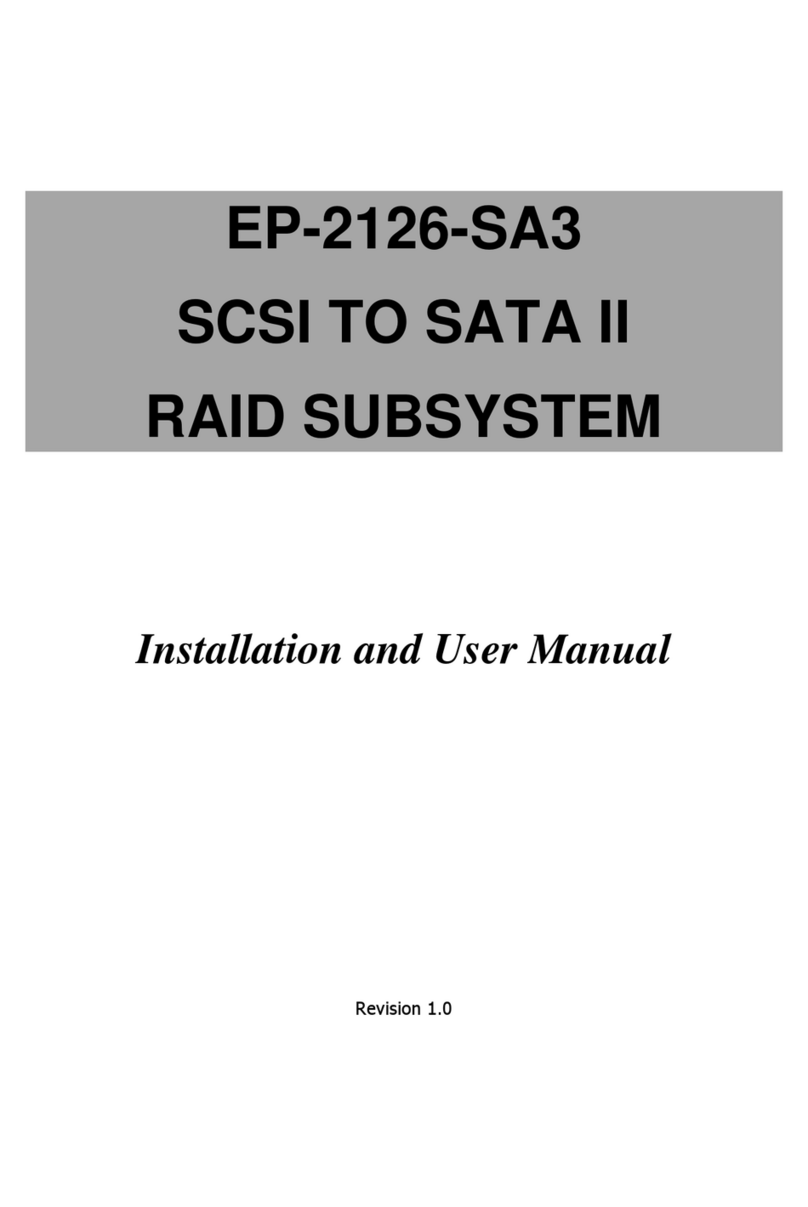
Proware
Proware EP-2126-SA3 User manual
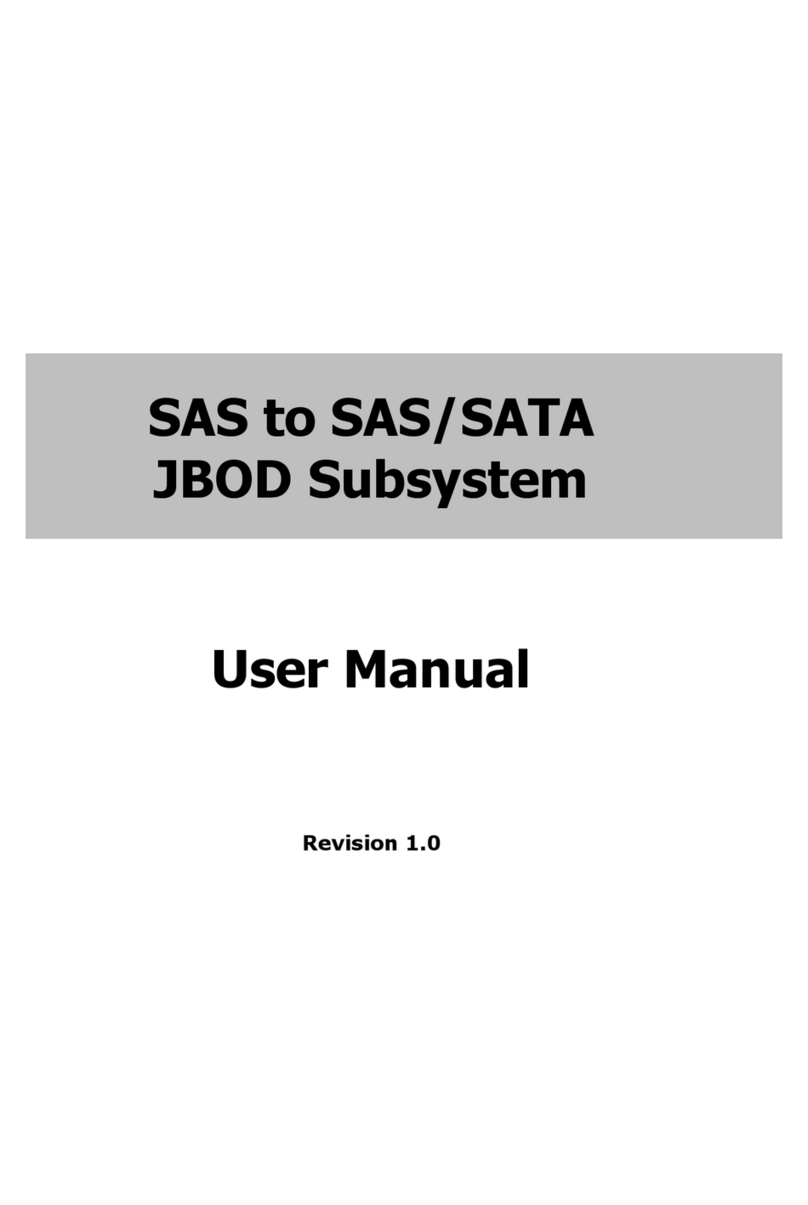
Proware
Proware EP-3163J/JD-SCSC User manual
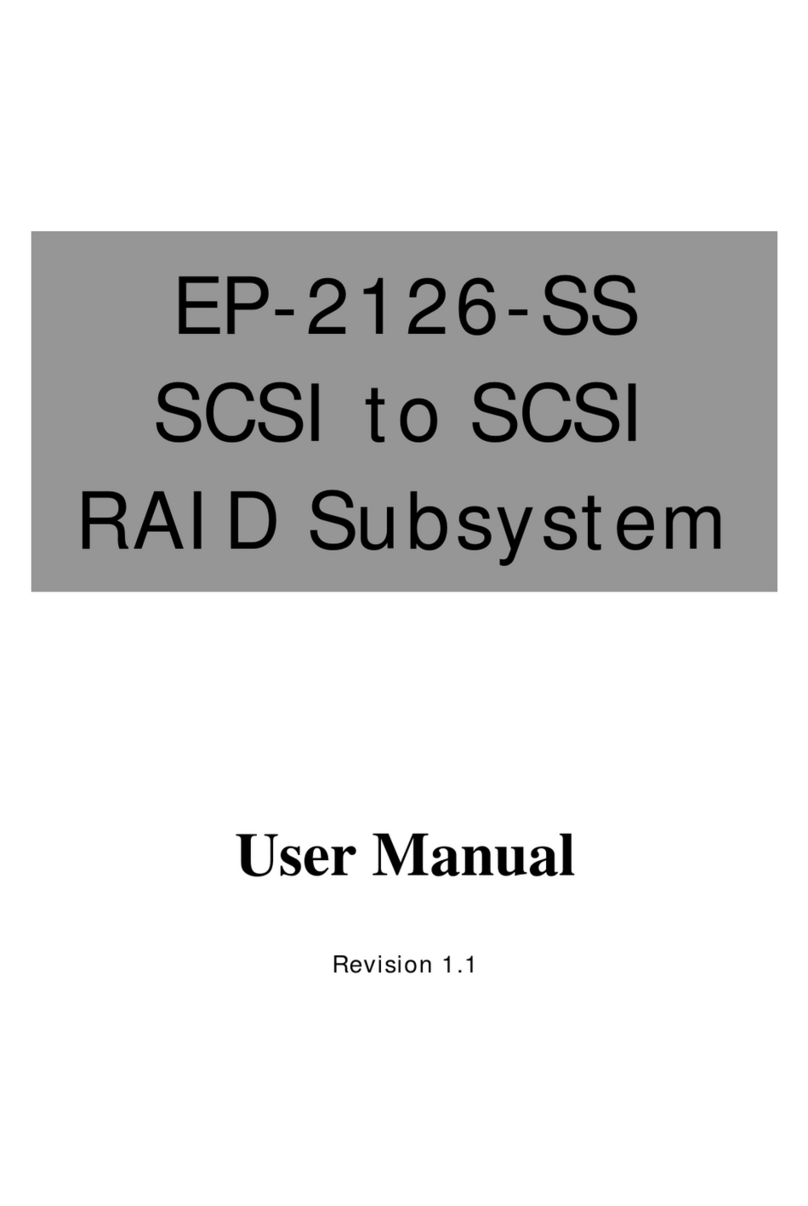
Proware
Proware EP-2126-SS User manual

Proware
Proware EP-4246J-S6S6 User manual
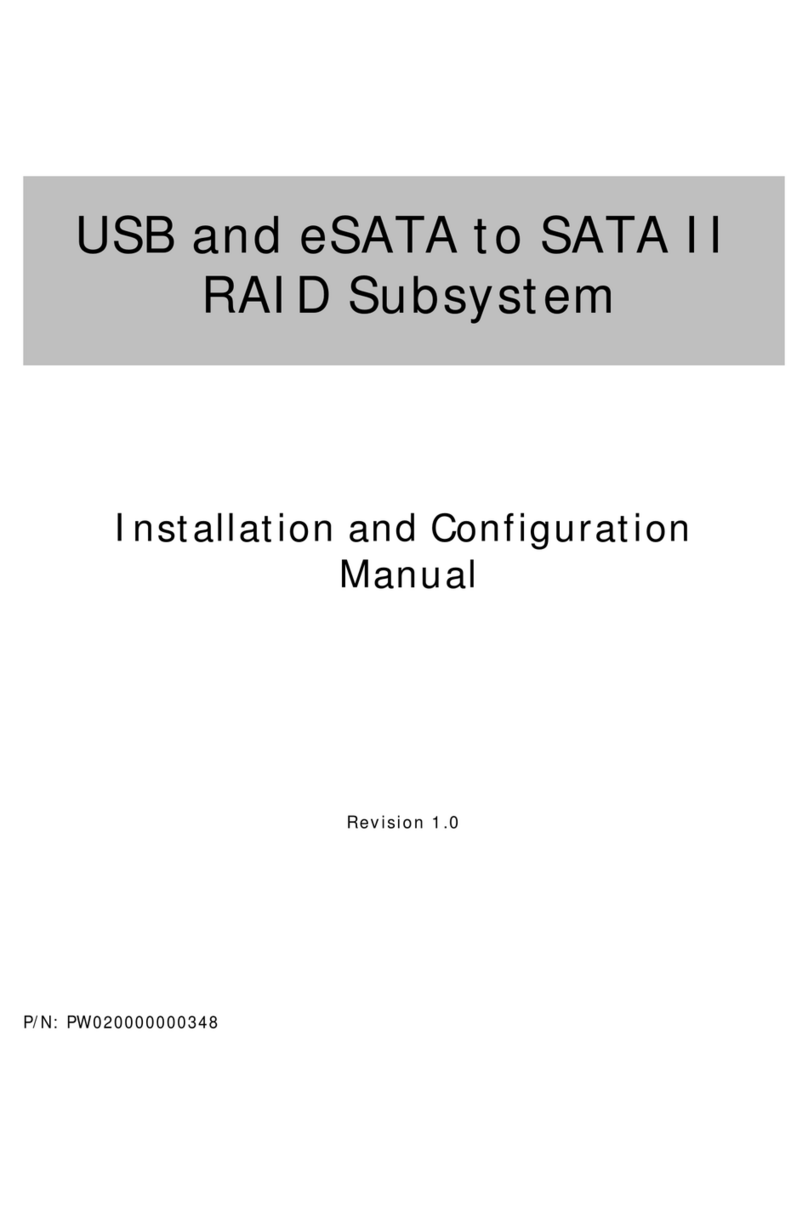
Proware
Proware SB-1413-UA Manual
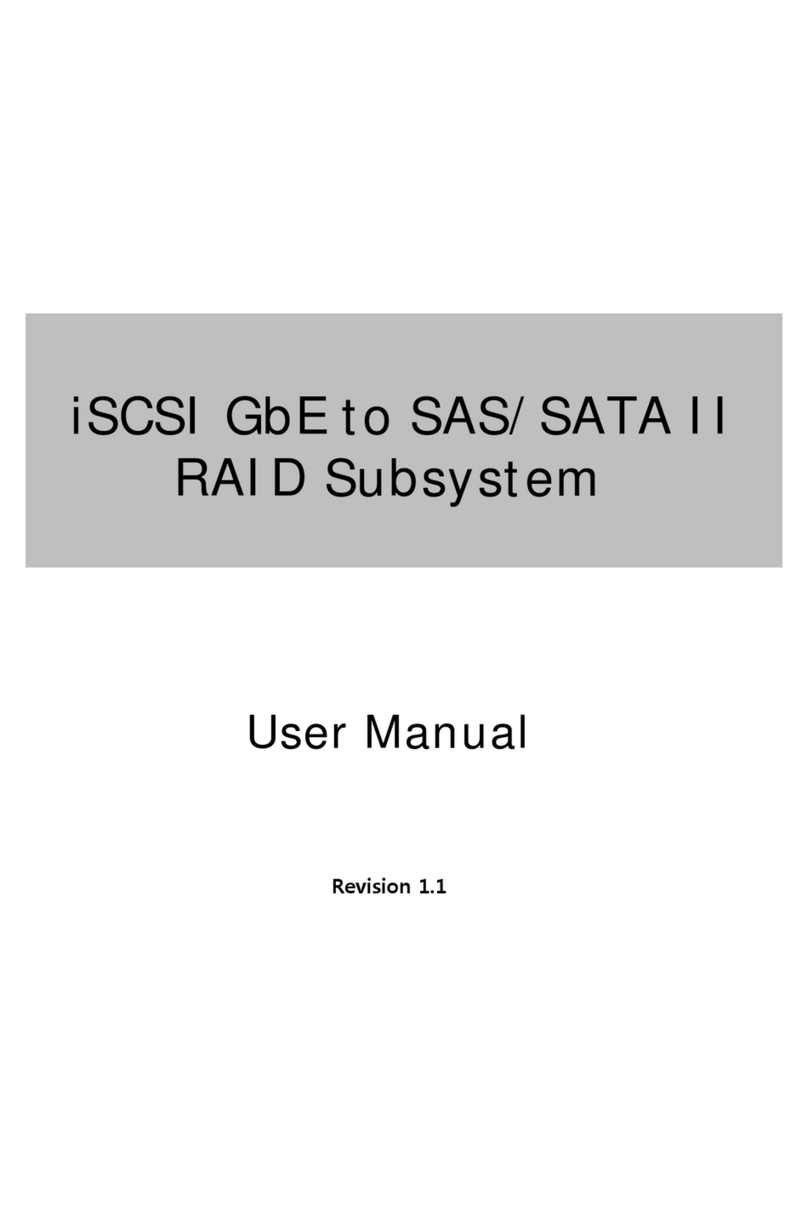
Proware
Proware EP-3164D-GAS3 User manual
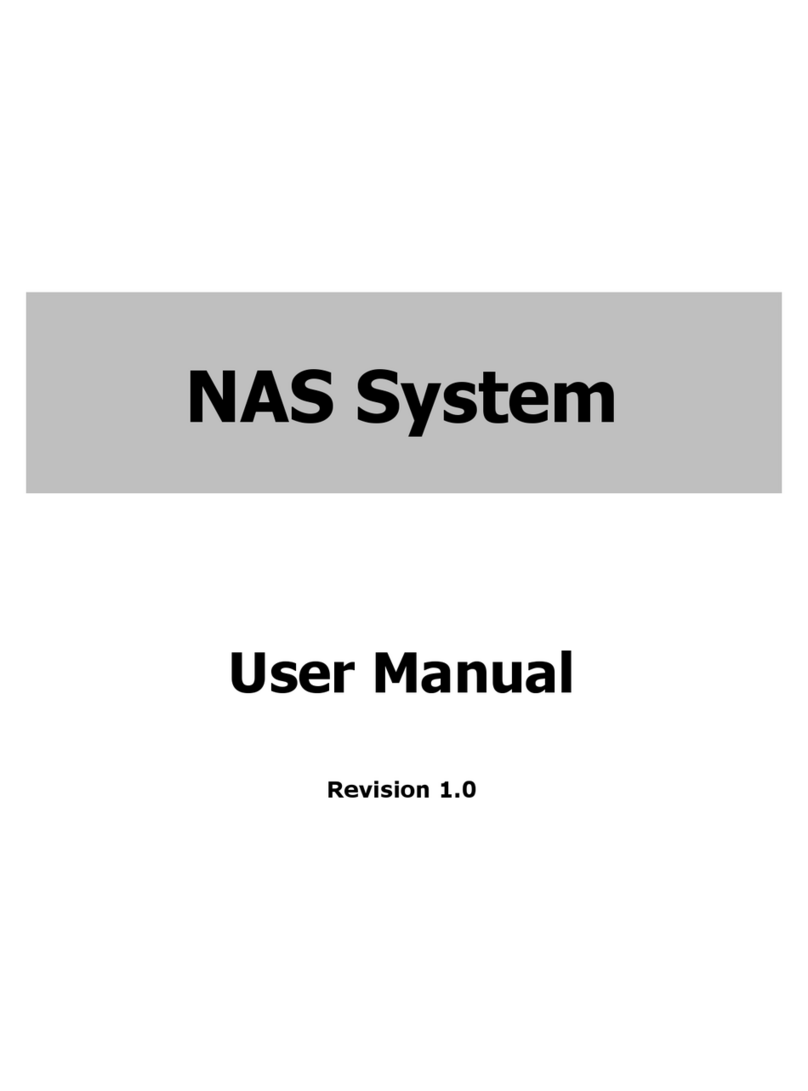
Proware
Proware EN-1400A6B-CM User manual
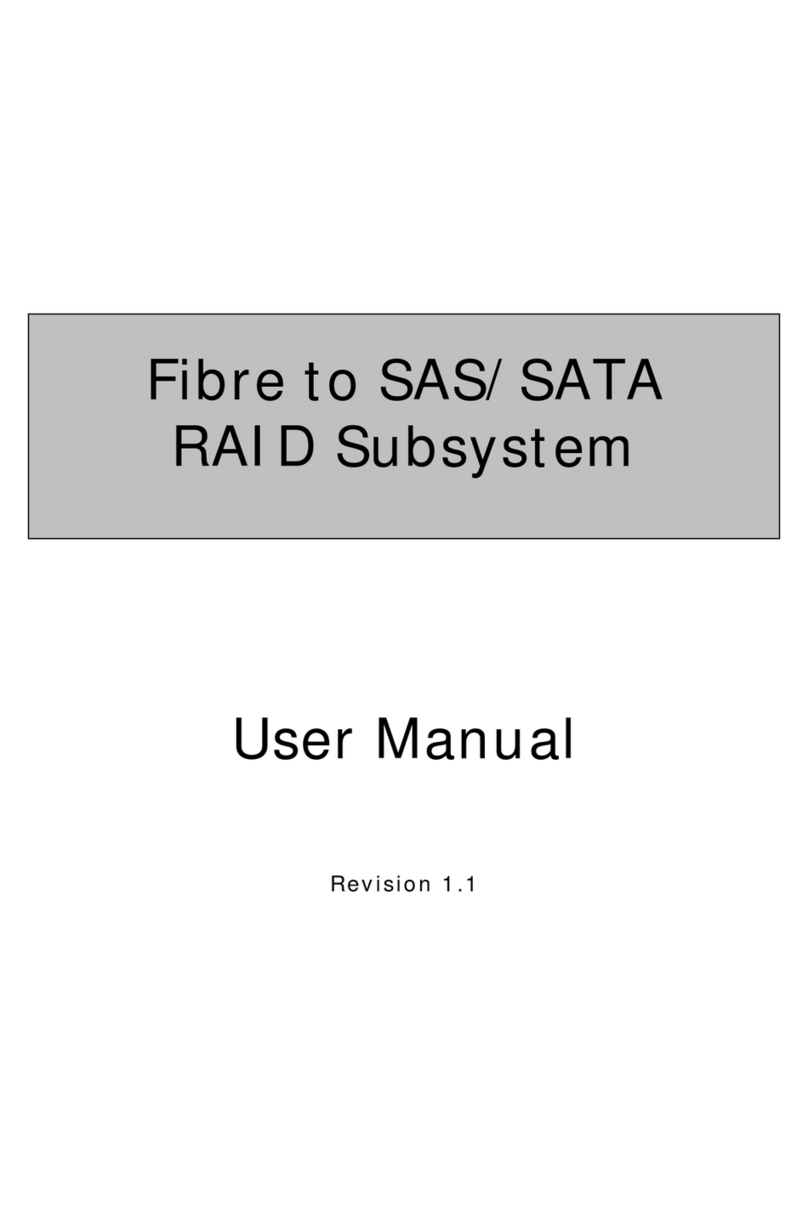
Proware
Proware EP-3163S-F8S6 User manual

Proware
Proware EN-2126JS6-SQX User manual
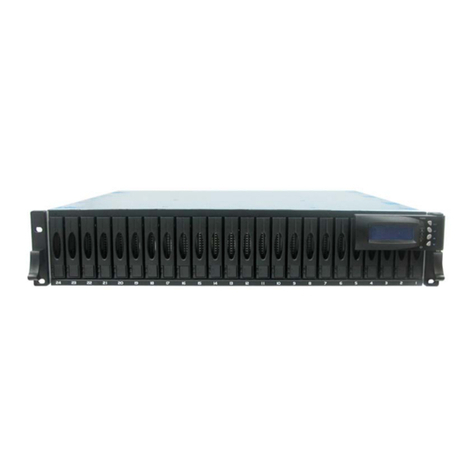
Proware
Proware Fibre to SAS/SATA II RAID Subsystem User manual
